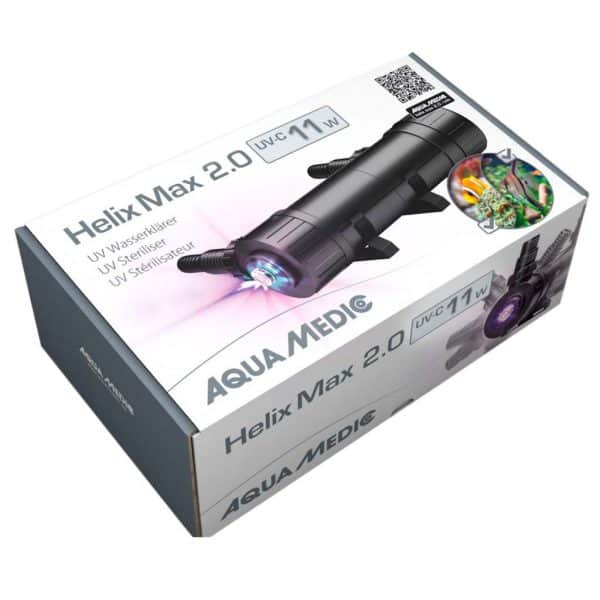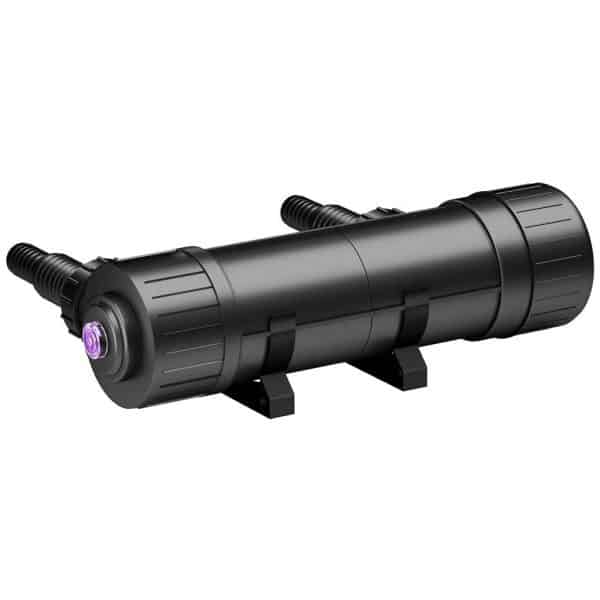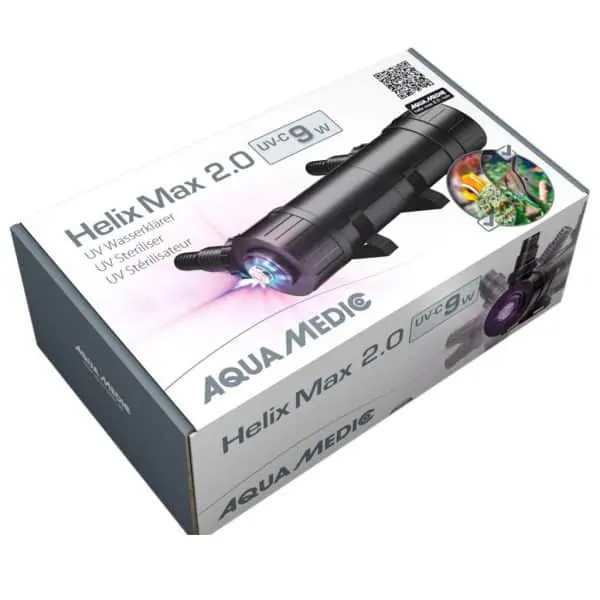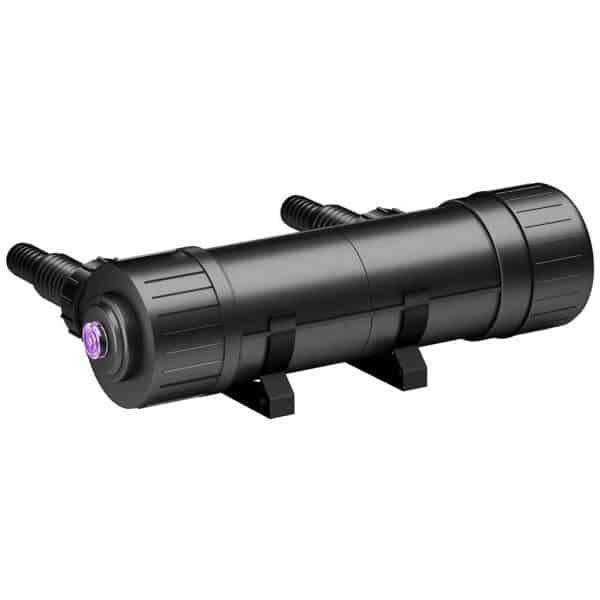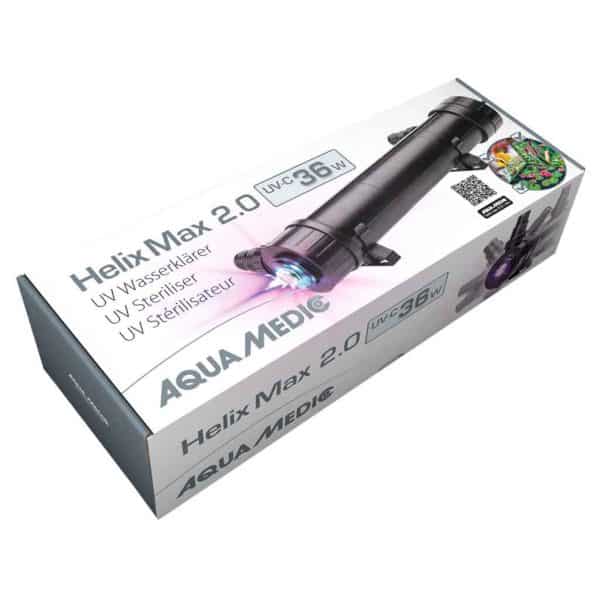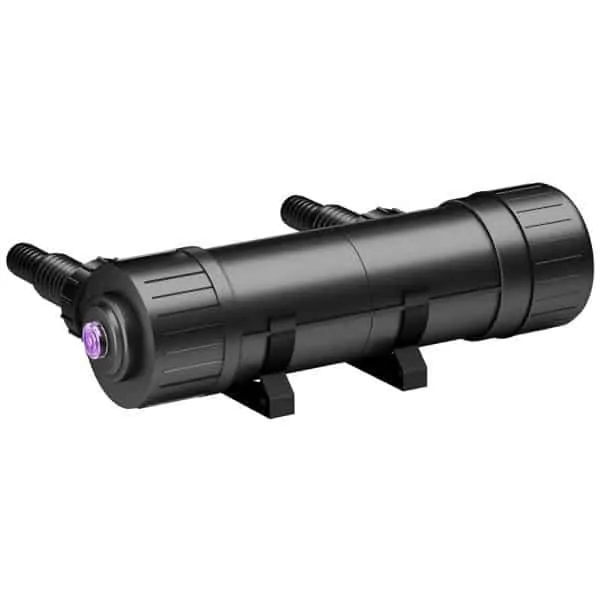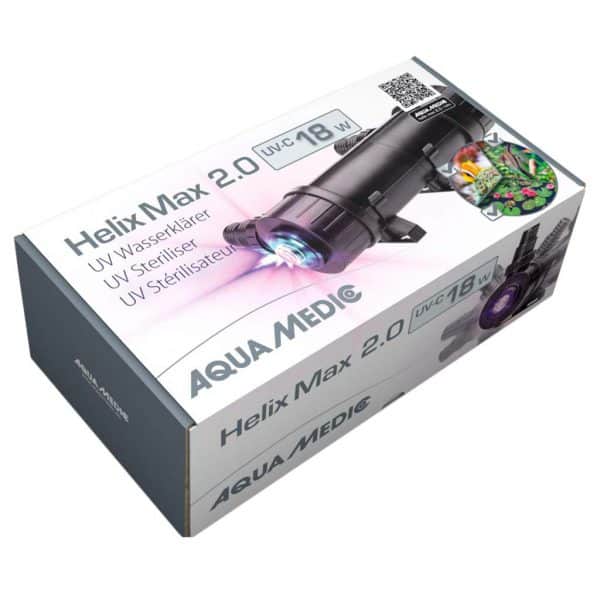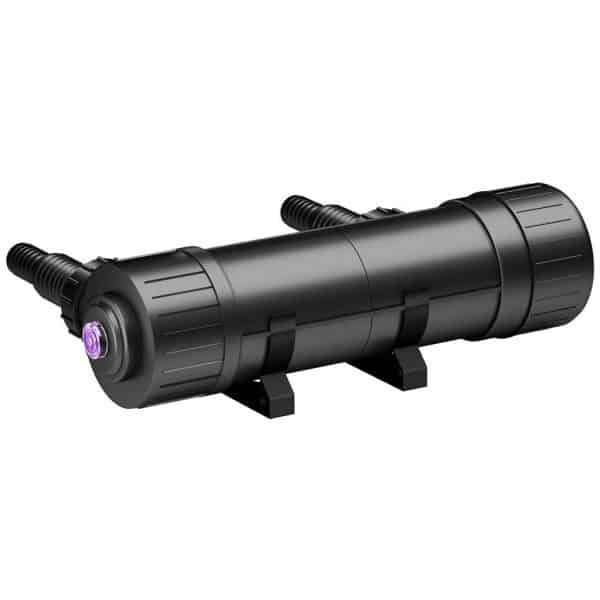Subtotal: €80,95
Why a UVC light unit on an aquarium
A UV-C light unit is used to obtain clear water. In addition, some harmful bacteria are killed, which is a nice side effect.
Read more information at the bottom of the page
Aqua Medic
UV sterilizer
Aqua Medic
UV sterilizer
Aqua Medic
An UVc light is standard on almost all ponds. Some filters even have a UV lamp built in as standard. Nevertheless, the use of UV-C in an aquarium is not obvious. Why then place a UV lamp at a pond and not at an aquarium. After all, they are both systems with fish, water, plants and corals. The answer lies in the plants. Plants consume a lot of nutrients that are also the food for algae. If there are many nutrients present and the conditions (temperature and light) are ideal, floating algae will multiply quickly and the water will turn green. There are rarely enough plants in the pond to create a good healthy living environment. In addition, too many and too large fish are used in a pond. A UV lamp at the pond is therefore constantly burning.
With an aquarium this is often different.
Plants are often abundantly present and the nutrients are sufficiently broken down by the plants in a healthy system to prevent the floating algae. However, it can also be useful to use an uvc lamp in an aquarium. As soon as the biological balance in the aquarium disrupts somewhat, floating algae can quickly increase. By regularly switching on the UV lamp, the growth of algae in the aquarium can be prevented.
UV-C lamp against algae in an aquarium
So a UV lamp works against floating algae that occur in the water but do not kill it. The UV-C light is absorbed by the then from single cells such as algae and bacteria. This damages the DNA and RNA, preventing the algae from reproducing. & nbsp; The dead algae are then collected or skimmed in the filter. This has a very positive influence on the clarity of the water. The water therefore becomes a lot clearer.
UV-C lamp against diseases (eg dot) in an aquarium
The use of UV-C therefore also works against many harmful but also harmless bacteria. This has both advantages and disadvantages. Healthy bacteria will also die, but since they are mostly attached to the filter and to plants, rocks, etc., the side effect is nil. Harmful pathogenic bacteria that occur in the water are therefore also treated and will be reduced as a result. This reduces the risk of waterborne infection infection.
Power and flow UVC filter on an aquarium
There are many types of UV lamps available for an aquarium. It is important that the organisms are irradiated long enough to destroy the DNA. The water must not flow through it too quickly. Also the strength of the lamp is an important factor. The stronger the lamp, the faster the cells are destroyed. You can state that when the flow is doubled, the wattage must also be doubled. It is best to connect a UV-C lamp via a separate small pump.
Note that a UV lamp only emits UV-C radiation for a limited number of hours. This is usually around 8,000 hours. After this time, the lamp still emits light, but no more UV-C radiation. The amount of UV-C radiation emitted decreases the longer it burns. After 4000 hours the strength of the UV radiation is therefore already 50% reduced (depending on the quality). You therefore have to replace a UV lamp regularly.

 Nederlands
Nederlands
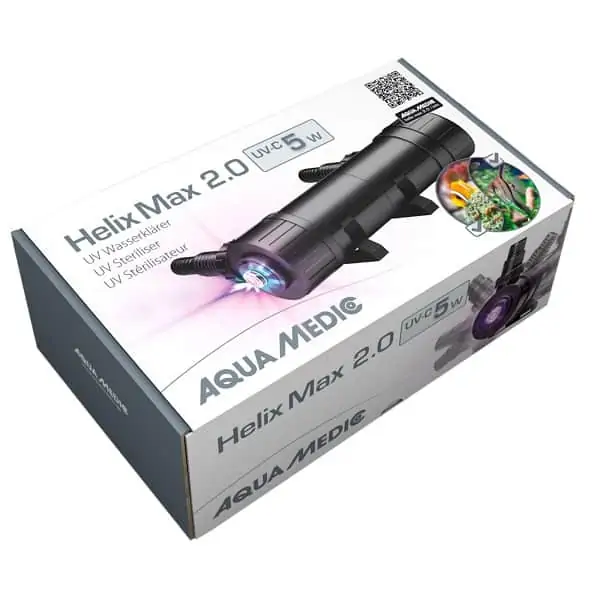 Aqua Medic Helix Max 2.0 5W
Aqua Medic Helix Max 2.0 5W 